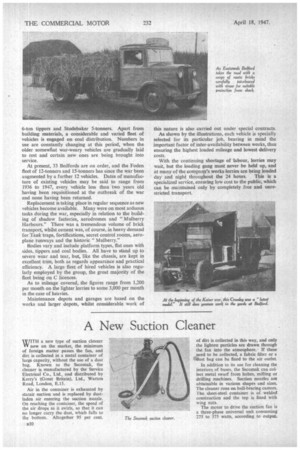A New Suction Cleaner WJ1TH a new type of suction
Page 44

If you've noticed an error in this article please click here to report it so we can fix it.
cleaner VI' now on the market, the minimum of foreign matter passes the fan, and dirt is collected in a metal container of large capacity, without the use of a dust bag. Known as the Secomak, the cleaner is manufactured by the Service Electrical Co., Ltd.. and distributed by Kerry's (Great Britain), Ltd., Warton Road, London, E.15.
Air in the container is exhausted by statair suction and is replaced by dustladen air entering the suction nozzle, On reaching the container, the speed of the air drops as it swirls, so that it can no longer carry the dust, which falls to the bottom. Altogether 95 per cent. of dirt is collected in this way, and only the lightest particles are drawn through the fan into the atmosphere. • If these need to be collected, a fabric filter or a dust bag can be fixed to the air outlet.
In addition to its use for cleaning the interiors of buses, the Secomak can collect metal swarf from lathes, milling or drilling machines. Suction nozzles are obtainable in various shapes and sizes. The cleaner runs on ball-bearing castors. The sheet-steel container is of welded construction and the top is fixed with wing nuts.
The motor to drive the suction fan is a three-phase universal unit consuming 275 to 375 watts, according to output.




















































































